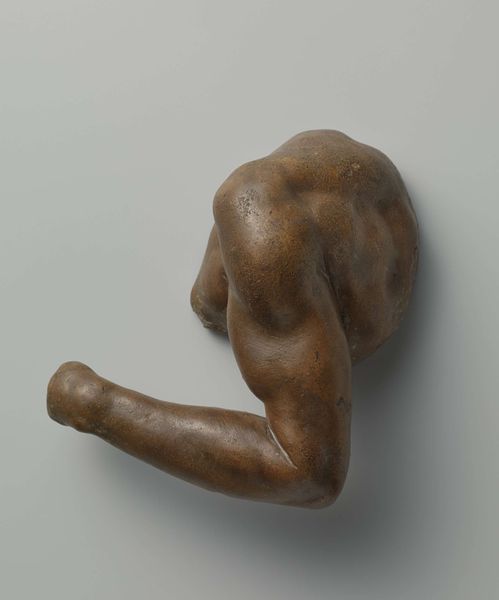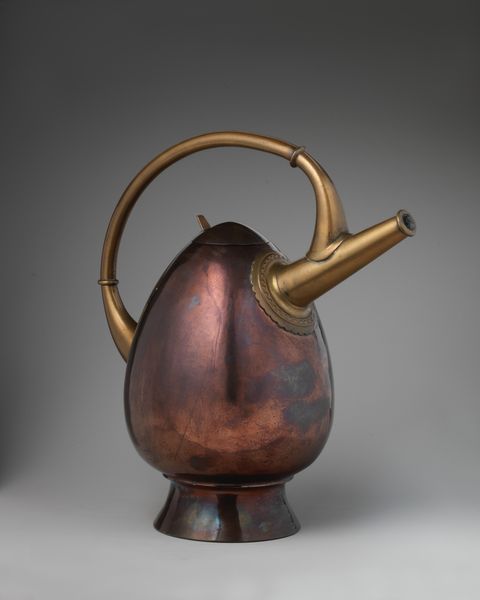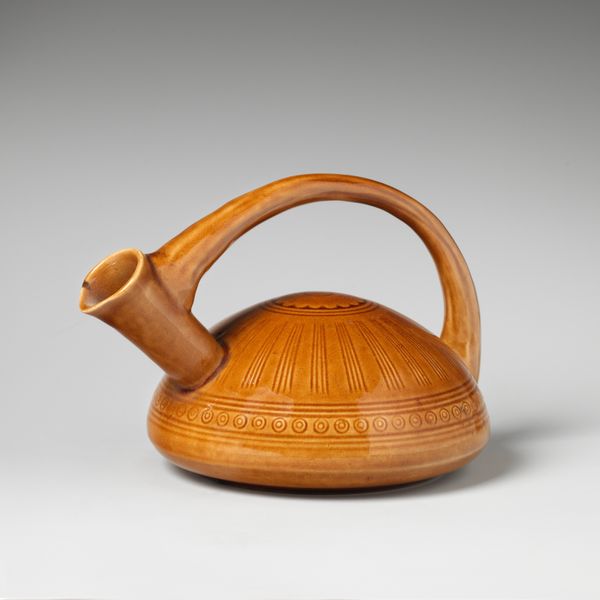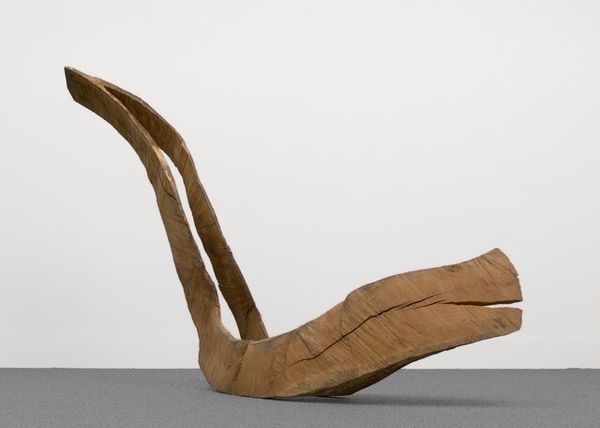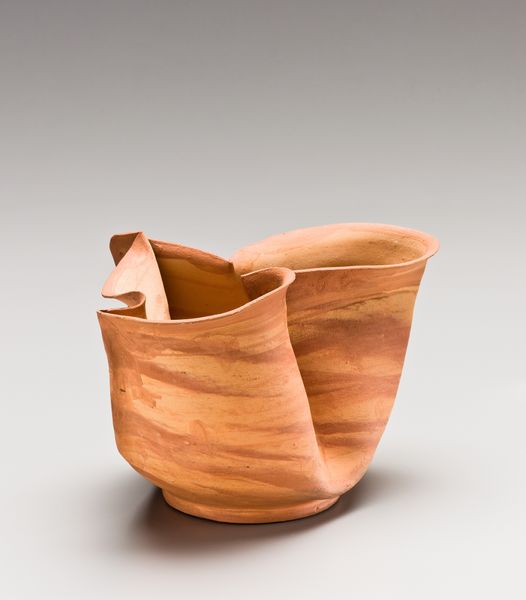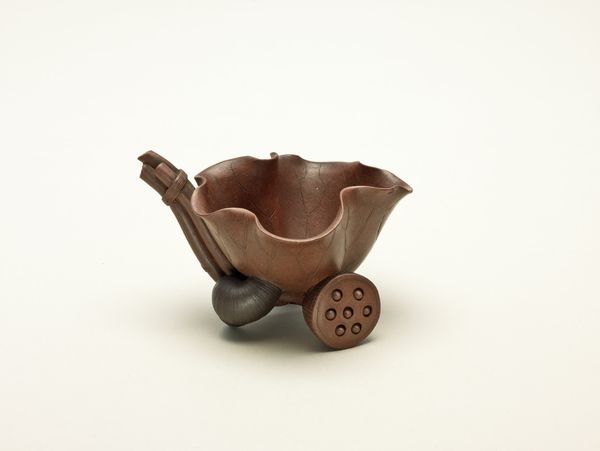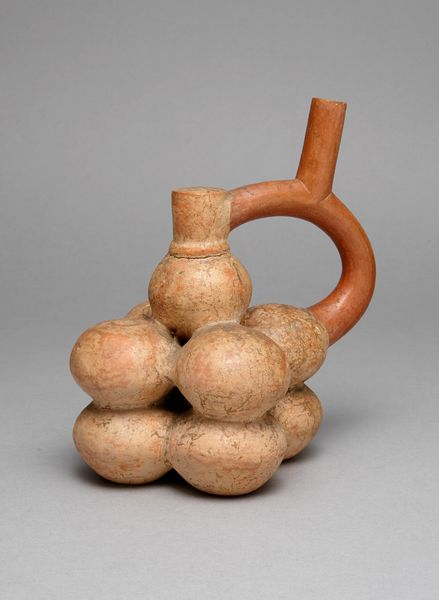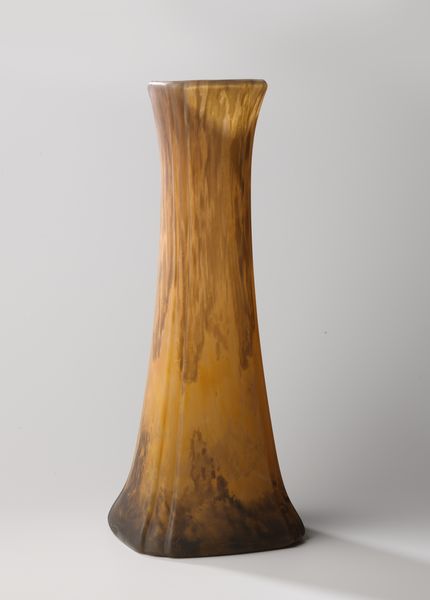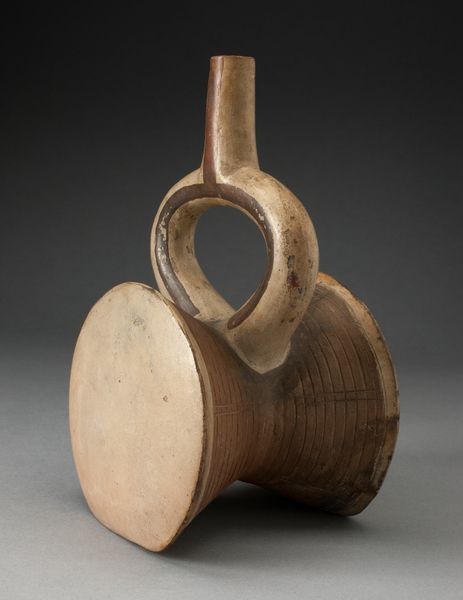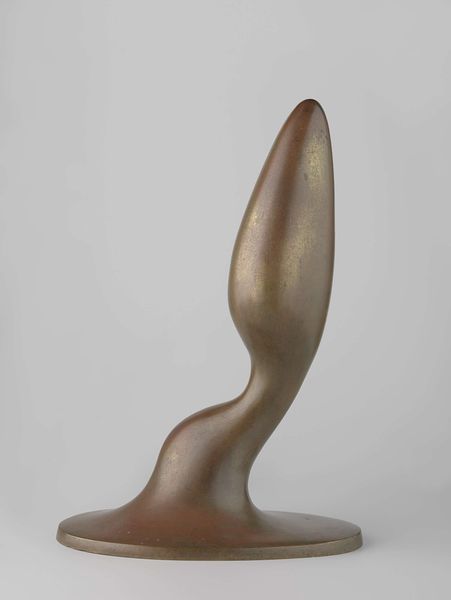
Dimensions: object: 310 x 310 x 270 mm
Copyright: © Saloua Raouda Choucair Foundation | CC-BY-NC-ND 4.0 DEED, Photo: Tate
Curator: We’re looking at "The Screw" by Saloua Raouda Choucair, a sculpture held in the Tate Collections. Editor: It has a captivating, almost organic form despite its hard materiality. The interplay of textures and varied wood tones is remarkable. Curator: Absolutely. Choucair's construction is deeply methodical, reflecting an interest in mathematical principles as applied to abstract form. Consider the craftsmanship involved. Editor: Indeed. Thinking about process, the labor invested in carving and assembling those wooden elements speaks to a deliberate engagement with craft traditions and the inherent qualities of the wood itself. Curator: The individual elements achieve a harmonious whole; their relationship suggests a wider universal order. Editor: And in that assembly, there's a tension between the manufactured and the natural. The title itself implies industrial production, yet the hand-carved quality suggests a more intimate process. Curator: A synthesis, then, of seemingly disparate elements and ideas, beautifully realized. Editor: Precisely. An intriguing object lesson in balance.
Comments
Join the conversation
Join millions of artists and users on Artera today and experience the ultimate creative platform.
tate 6 months ago
⋮
The Screw consists of three carved wooden elements which fit together to make the piece. The elements are a semi-circular form, a head-like oval and a central screw shape that ‘fixes’ the three elements together. Each piece is carved in wood of a different colour. Unlike some earlier works where separate elements can be recombined, such as Poem 1963–5 (Tate T13278), The Screw can only be configured one way. With its singular form that is comprised of separate interlocking parts, the work can be read as a metaphor for human relationships and sexuality, as well as for the Sufist and Islamic notion of oneness. Like many of Choucair’s works, each separate part contributes to the whole while having its own unique identity. The artist has related this to Arabic poetry, where each stanza can stand alone while being part of a bigger whole.

